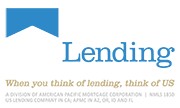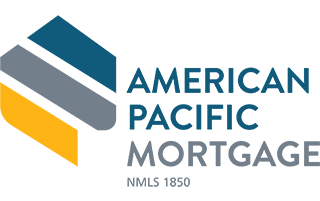Let’s Break it Down: The Reality of Reverse Mortgage Fees & Charges
Simply engaging in a reverse mortgage is never just about the loan. There is a whole package of fees and charges that go along with any kind of real estate financing, from the opening stage all the way to the final paperwork and closeout funding. That means any homeowner thinking about a reverse mortgage also needs to consider the true cost of such a venture, especially when the fees that are applied can vary widely from lender to lender.
Generally, lenders are required by state and federal lending laws to provide full disclosure on most of their financing activities. This is designed specifically to protect the consumer. However, even though forms such as the Total Annual Loan Cost (TALC) Disclosure are regularly used, there is still a lot of confusion among consumers about what fees actually apply and when. Here is a breakdown of how they generally work.
Upfront Fees
The upfront fees typically cover what it costs to borrow money, in addition to the interest charged on the loan. Known as origination fees, these upfront costs are charged and packaged into the total funds that have to be paid back by the borrower. The origination fee is typically something near 2 percent on the first $200,000 financed in a reverse mortgage and then 1 percent on the amount over the initial $200,000.* The Federal Housing Authority’s HECM program caps such fees to a total of $6,000 but with other lenders, it can add up to a higher charge. However, some lenders will waive an origination to generate business.
Credit Report Fee
This one is a standard cost requirement that gets passed on to the consumer. In most cases the lender is using a third party for the credit report data, so the cost is borne by the applicant triggering the need. The cost is usually somewhere between $20 and $50, depending on the service used.
Flood Certification Fee
For those areas prone to flooding, a flood certification fee will be charged, somewhere around $20 usually, to confirm if the home is indeed in a floodplain risk area. If it is, flood insurance may be required.
Escrow Fee
Any time money is borrowed or financing involves real estate, escrow will be a part of the process. This insures that the exchange of money for title and rights occurs cleanly as well as whether there are any title issues on the property that need to be resolved. The cost of the escrow agent is charged to the consumer and can range widely from $150 to as much as $800.
Document Prep Fee
Photocopying and document preparation have to be addressed, including professional preparation of all the necessary paperwork and forms such as the mortgage note and special local government forms. The expense here goes from a low of $75 to a high of $150.
Recording Fee
The local government county recorder’s office will charge its own fees for title changes to records, and that will trigger government fees. Depending on the jurisdiction, these fees can vary significantly from $50 to ten times as much.
Courier Fee
To keep things on track the transfer of hard copy documents moves quickly between the lender and agents, so couriers who ensure everything stays together and arrives timely are used. This fee is passed on for a fee usually near $50.
Title Insurance
Any time there is a title change on a financed property, the lender wants to be sure they and the borrower are protected if there is a disputed title (i.e. litigation costs). So title insurance will be required for the transaction.
Pest Inspection
Bugs can be costly to get rid of and no lender wants to be stuck with a property that has termites. A pest inspection to insure the property is clear will cost something under $100.
Survey
Any time the property boundaries are not clear, which usually occurs with rural properties versus suburbs with established recent maps, then a survey has to be performed. The surveyor walks the property and compares with the map records to confirm the actual property lines. The task will usually ring up a receipt of $250.
Recurring Fees
In addition, to reverse mortgage costs, the homeowner has to take into account there will be ongoing costs as well after the mortgage is funded. These include all the costs associated with homeownership in general including:
- Property taxes
- Home insurance
- Property maintenance
- Home repairs
- HOA fees
- Local district assessments
If a homeowner does not take care of these costs in a timely manner, the lender could force a sale of the home via a foreclosure to recover the loan funding earlier.
Interest
Interest will be charged on a reverse mortgage, just like any other loan, however, it is capped on exactly the amount of cash actually funded to the homeowner, not a total figure applied for. This is why some borrowers look to a line of credit reverse mortgage versus a lump sum approach.
Mortgage Insurance Premiums
A mortgage insurance policy will be taken out to make sure that the lender is protected for the full amount borrowed. The FHA version of a reverse mortgage requires a mortgage insurance premium (MIP) to always be included. Typically, the MIP will be 2 percent of the home’s appraised value, and many programs require it to be paid first before anything else is funded. Then there is an annual ongoing charge, 0.5 percent of what is owed. This adds up over time and then gets paid when the loan matures.
Home Costs
Other home costs could include renovations or landscaping. Again, the home has to be maintained, so if anything is changed, it needs to be completed and not left sitting as a half-done project.
Servicing Fee
Reverse mortgage lenders get to also charge an administrative fee for servicing the reverse mortgage in general. This is simply a markup cost charged to the consumer by private lenders. Federal law caps this fee to $35/month. For simplification, a lot of lenders have consolidated this fee with the interest charged on a loan provided but some still do have a separate charge.
Lending Rates
Lending rates is another name for the interest charged. As mentioned earlier, this is a cost of borrowing levied by the lender for providing a loan. It typically comes in two forms: fixed and variable.
Types of Interest Rates
Fixed rates are ideal for those who want to pay the same figure every month and not worrying about cost fluctuation. Adjustable rates may be cheaper for a certain part of the borrowing but change over time.*
Adjustable Rates
An Adjustable Rate Mortgage, better known as the ARM, will frequently start with an extremely low rate level or “teaser”. This teaser rate will only last for a short period, maybe a few months or years, and then it rises to a higher level later in the life of the loan. Because this change can be reset based on a market index or similar annually, it is seen as adjustable.
Fixed Rates
The fixed rate is a permanent, unchanging interest rate charged on a borrowed amount for the life of the loan. This provides predictability, but fixed rates tend to be higher in the early years of a loan versus the adjustable rate cost.
The Current Interest Rates for Reverse Mortgage Loan
When it comes to reverse mortgages from the FHA, HECMs tend to be competitive with the private market. Both look to major market indexes like the London Interbank Offered Rate or LIBOR for rate-setting. Current calculations, which vary by lender, are running between 1.75 percent and 2.5 percent in mid-2018.*
Closing Costs
Given all the above, it becomes apparent how much variation there can be from one lender to the next regarding closing costs for a reverse mortgage. Ideally, a borrower thinking about entering into a reverse mortgage should always request a list of all fees and charges carried under closing costs for financing before committing to any agreement. Then the costs charged should be added to the overall expense of the loan to see its true financial burden up front and over time for the financing provided.
Do Your Homework
Lending fees and closing costs make what is already a bit of a complicated financing tool even more complex and confusing. Potential borrowers will be well-served to seek out professional help to navigate this jungle, saving them time and frustration in understanding every cost and commitment involved. It’s a key issue to know which fees can be incorporated into a loan as well as those that have to be paid up front with cash. Again, there can be a lot of variation from one lender to the next, so the potential borrower really needs to do his or her homework early before the serious talks begin on a reverse mortgage.
*Reverse mortgages are loans offered to homeowners who are 62 or older who have equity in their homes. The loan programs allow borrowers to defer payment on the loans until they pass away, sell the home, or move out. Homeowners, however, remain responsible for the payment of taxes, insurance, maintenance, and other items. Nonpayment of these items can lead to a default under the loan terms and ultimate loss of the home. FHA insured reverse mortgages have an up front and ongoing cost; ask your loan officer for details. These materials are not from, nor approved by HUD, FHA, or any governing agency.
The views, articles, postings, and other information listed on this website are personal and do not necessarily represent the opinion or the position of American Pacific Mortgage Corporation or US Lending Company.
* For loan examples and more information visit our disclosure page at https://www.uslendingcompany.com/disclosures/





